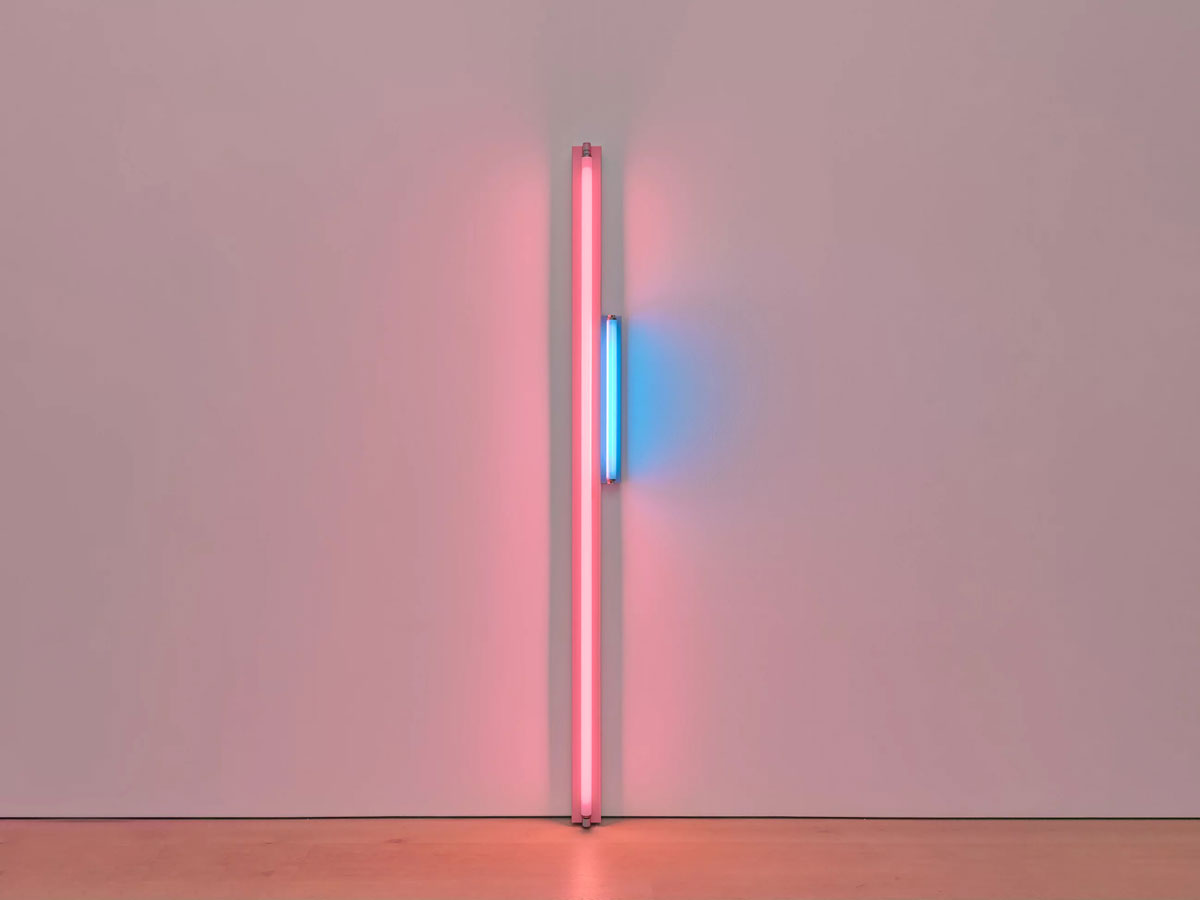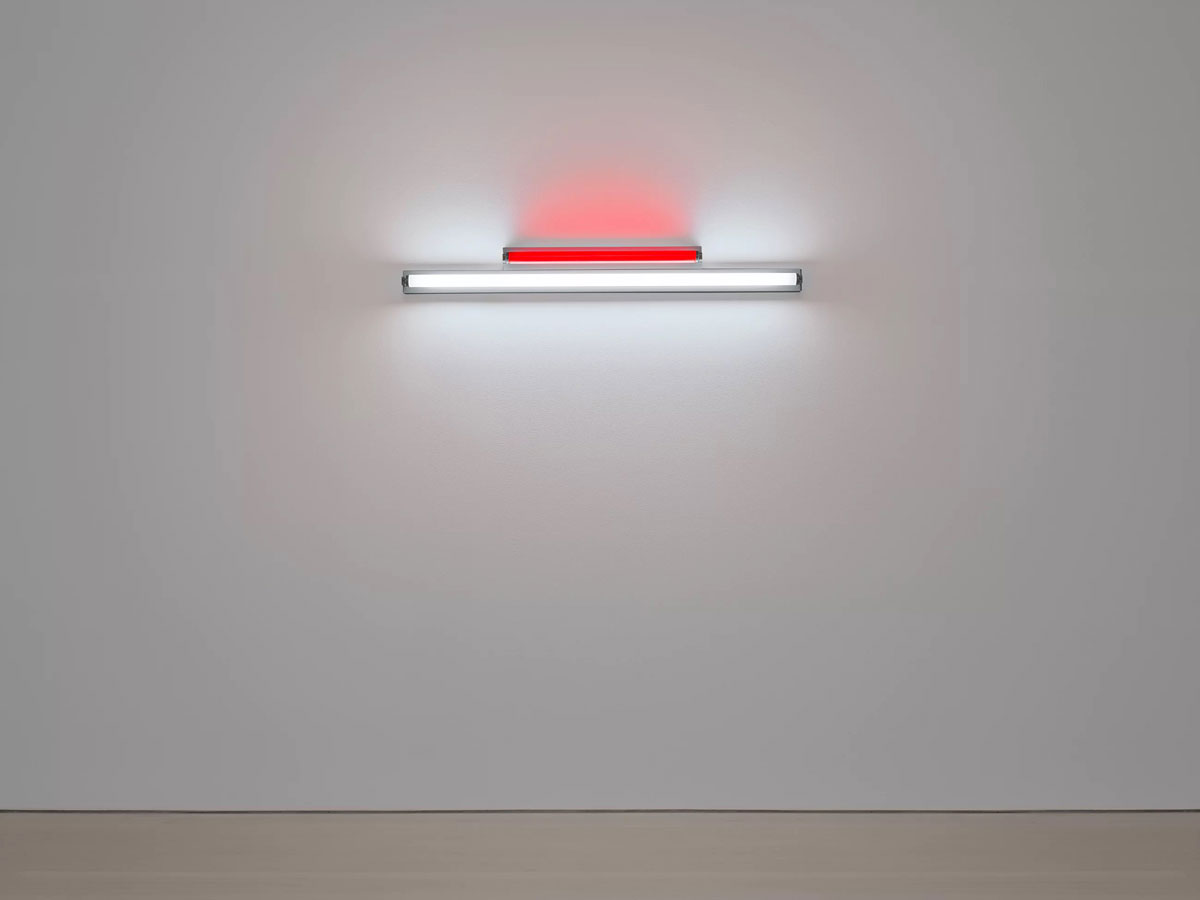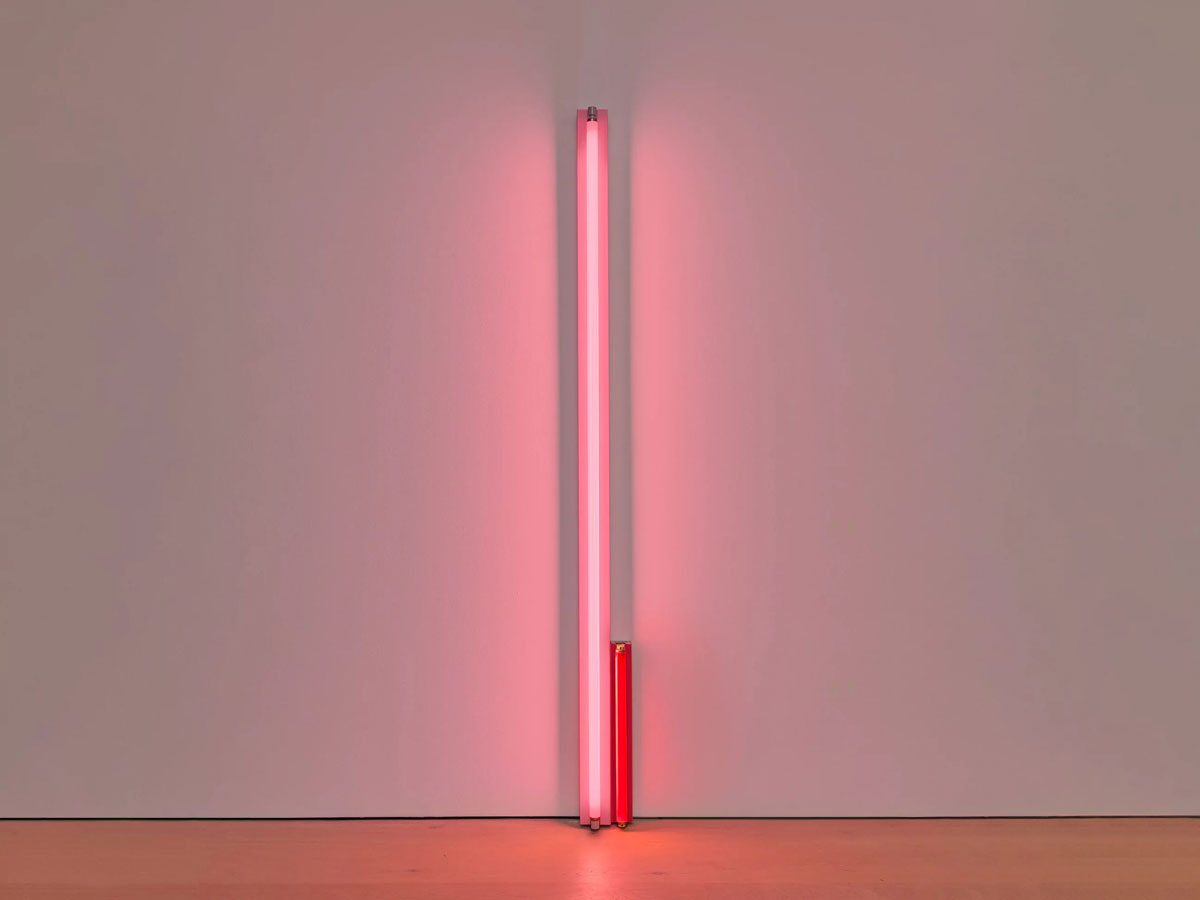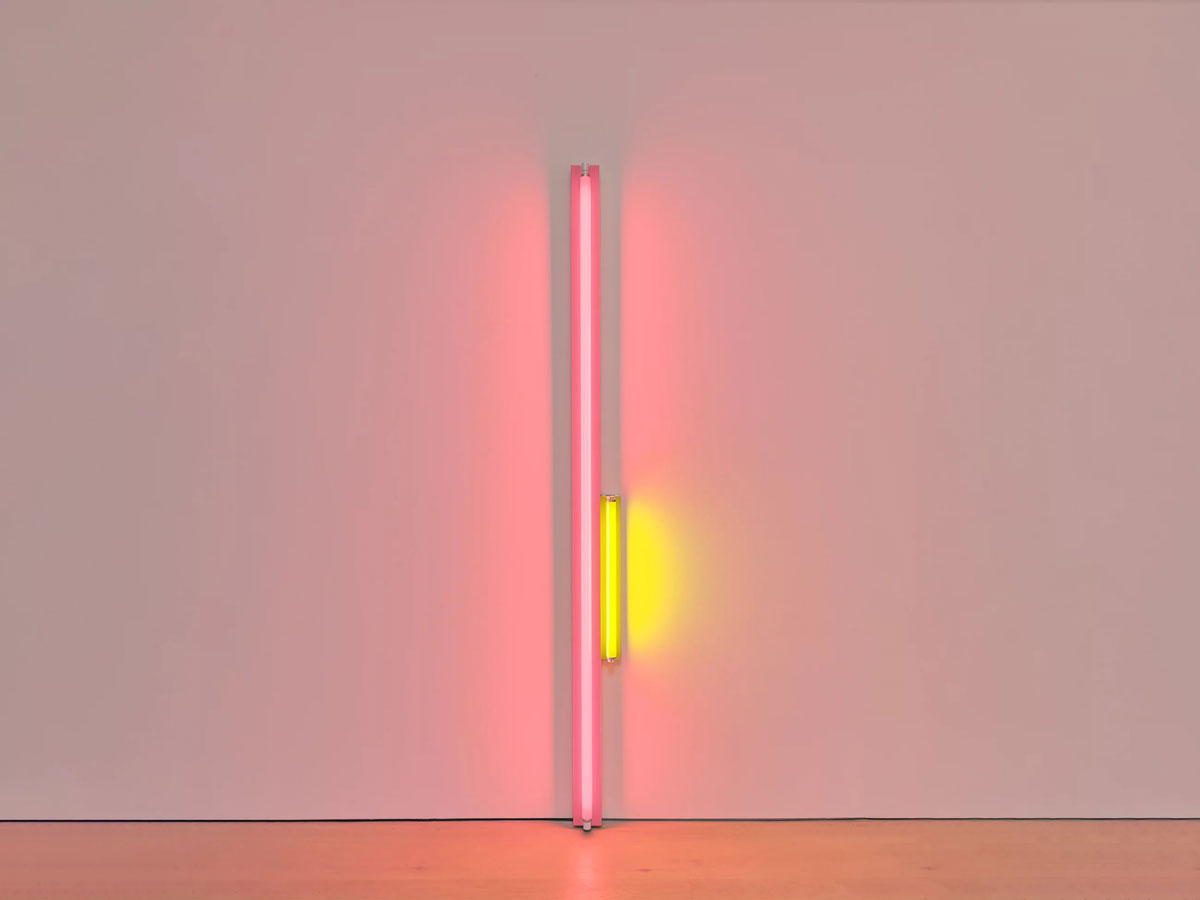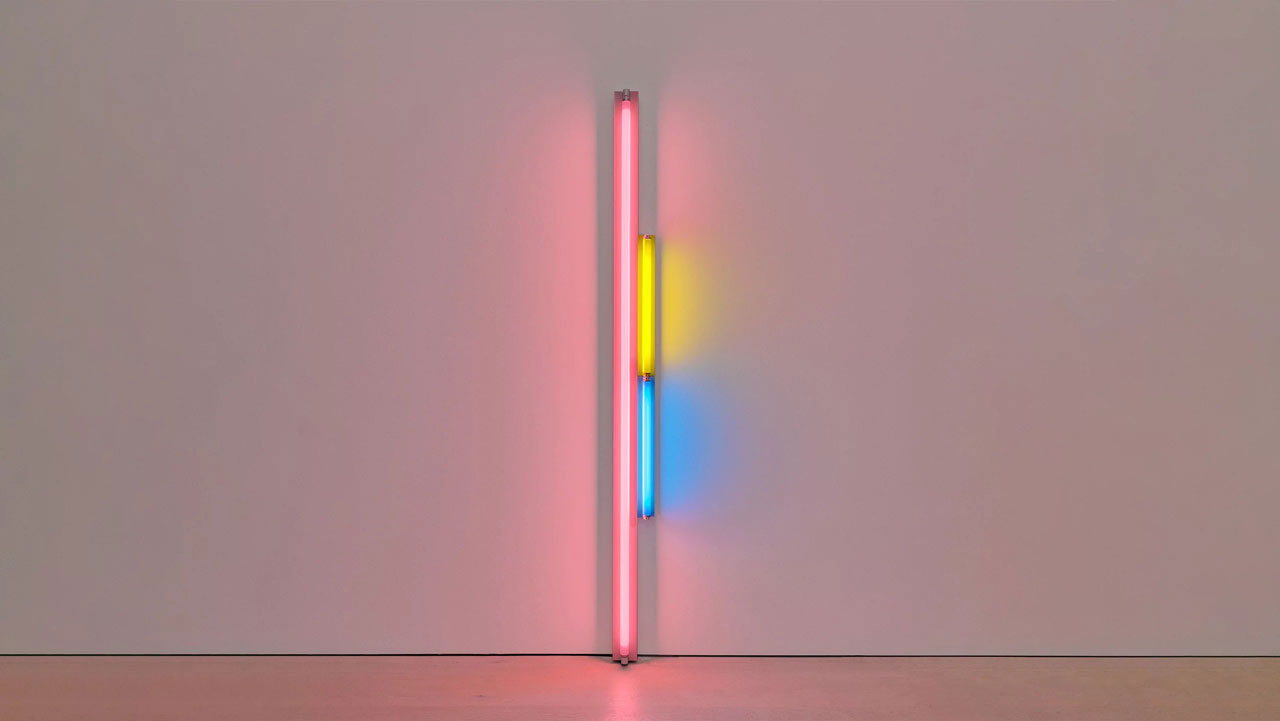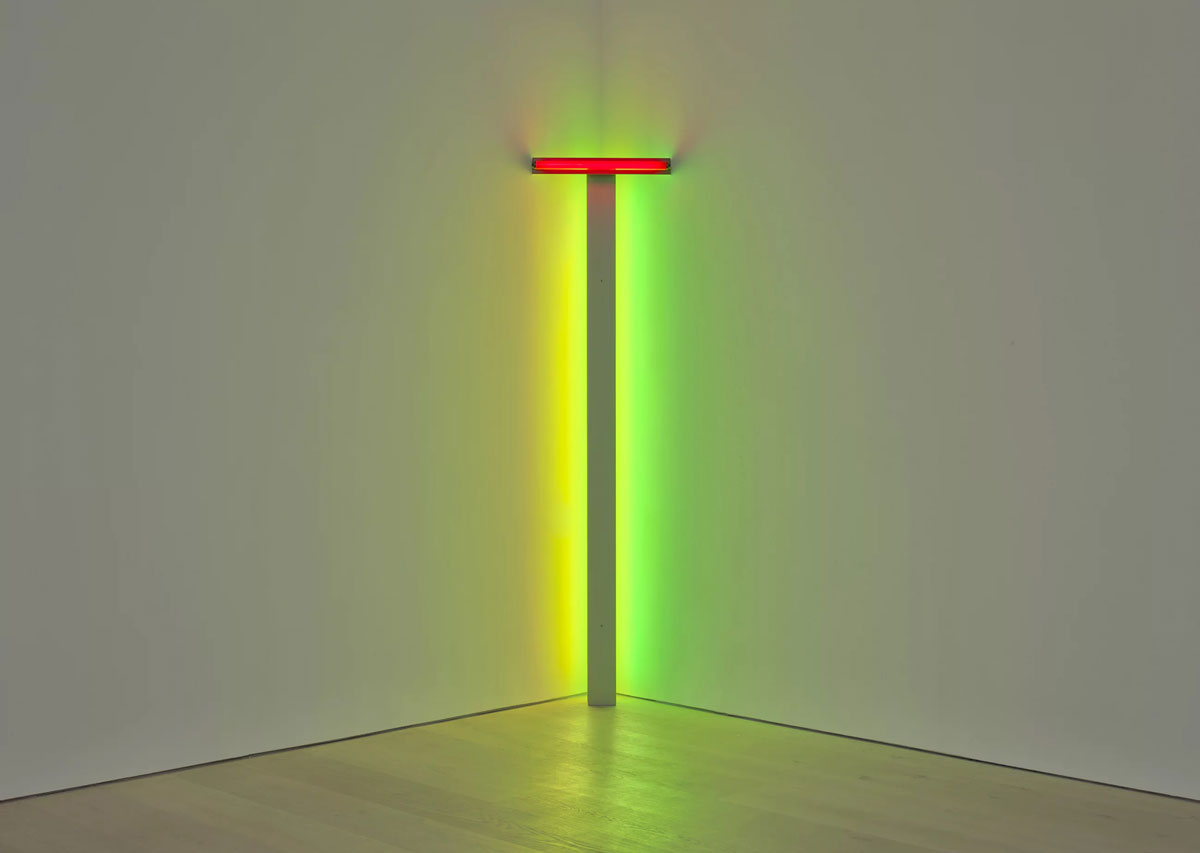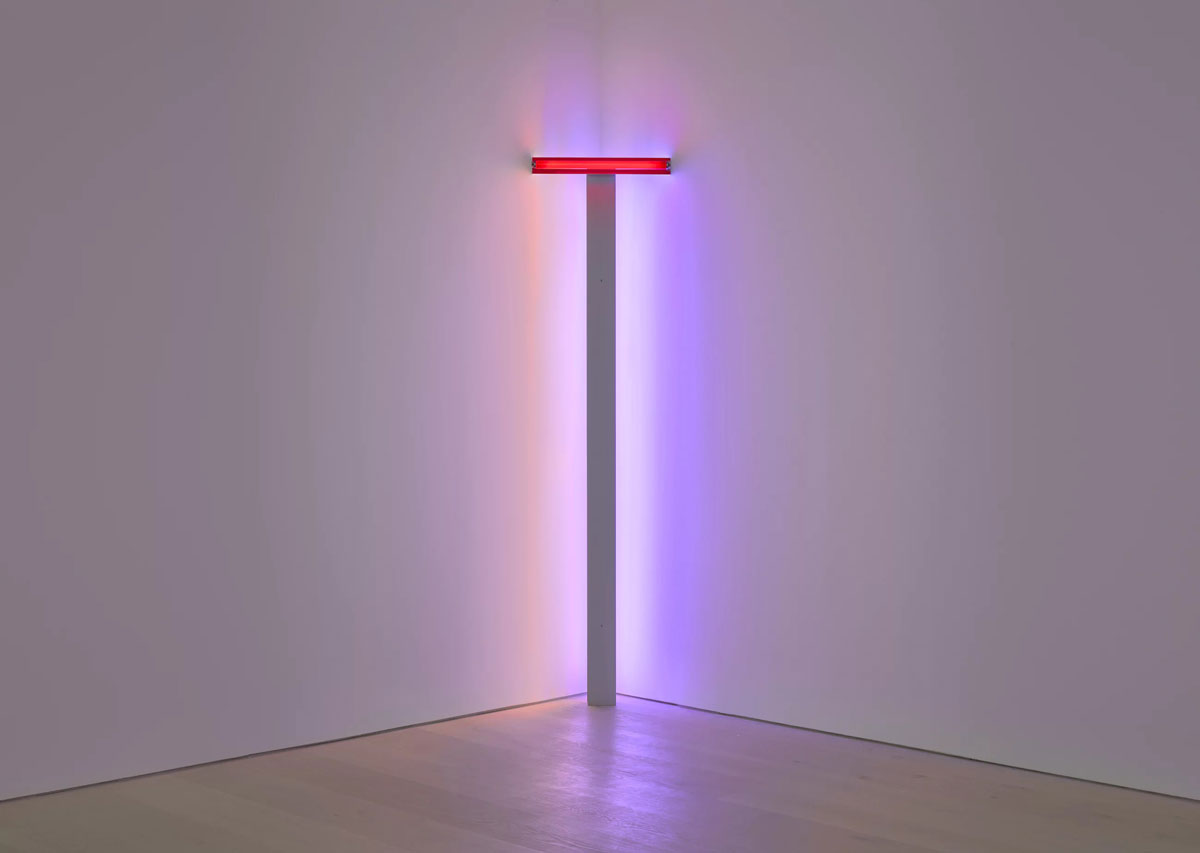ART CITIES: London-Dan Flavin
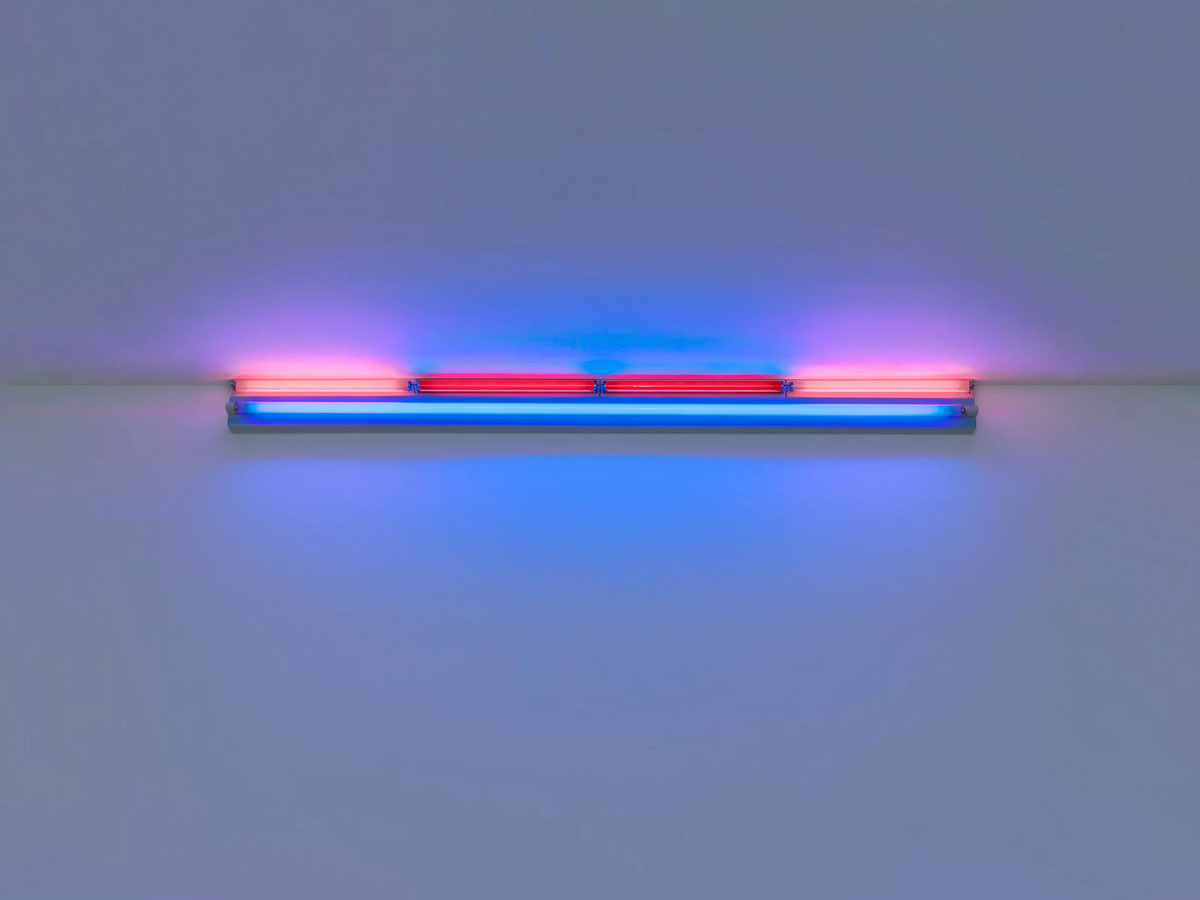 Minimalism can be seen as extending the abstract idea that art should have its own reality and not be an imitation of some other thing. We usually think of art as representing an aspect of the real world (a landscape, a person, or even a tin of soup!); or reflecting an experience such as an emotion or feeling. With minimalism, no attempt is made to represent an outside reality, the artist wants the viewer to respond only to what is in front of them. The medium, (or material) from which it is made, and the form of the work is the reality.
Minimalism can be seen as extending the abstract idea that art should have its own reality and not be an imitation of some other thing. We usually think of art as representing an aspect of the real world (a landscape, a person, or even a tin of soup!); or reflecting an experience such as an emotion or feeling. With minimalism, no attempt is made to represent an outside reality, the artist wants the viewer to respond only to what is in front of them. The medium, (or material) from which it is made, and the form of the work is the reality.
By Dimitris Lempesis
Photo: David Zwirner Gallery Archive
The exhibition “Colored Fluorescent Light” presented across two floors of David Zwirner Gallery in London, re-creates Dan Flavin’s momentous colored fluorescent light exhibitions, which took place at Leo Castelli Gallery and Galerie Heiner Friedrich in New York and Cologne in 1976, and figure as important early instances of his innovative use of immersive colou and serial progressions in response to architectural space. In bringing these works back together, the exhibition will provide a rare opportunity to directly experience the artist’s singular vision and ability to transform space through everyday materials. From 1963, when he conceived the diagonal of “May 25, 1963 (to Constantin Brancusi)”, a single gold fluorescent lamp installed diagonally on a wall, until his death in 1996, Flavin produced a remarkably consistent and prodigious body of work that utilised commercially available fluorescent lamps to create installations (or “situations,” as he preferred to call them) of light and color. Through these light constructions, Flavin was able to at once establish and redefine space. The artist’s work—which ranges in scale from individual wall-mounted and corner constructions to large-scale works, in which he employed whole rooms or corridors—testifies to his recurrent preoccupation with architecture. Each of the nine colors that comprised the artist’s visual vocabulary during these years (red, pink, blue, green, yellow, cool white, daylight, warm white, and soft white) are represented within the show (he later added ultraviolet light to his repertoire). The ground floor features two serial groupings devised by Flavin, each comprising four related works, that together give a sense of the vast possibilities conceptualised by the artist within the confines of this self-limited visual vocabulary. In the first gallery, the four vertically oriented works are spaced evenly across a single wall, each composed of, on the left, one eight-foot pink lamp, and on the right, one two-foot lamp in red, yellow, blue, or green that is positioned progressively higher as the viewer traverses the space. By contrast, in the next gallery, the four horizontally oriented works are presented end-to-end, clustered together tightly in the centre of the wall, each featuring a four-foot lamp of one of the varieties of white light, with a two-foot lamp of red light centred above. The first floor features a group of works that highlight Flavin’s experimentations with installation in the early part of his career, including a rarely seen work that the artist specified should be hung at the top edge of the wall where it meets the ceiling, causing viewers to turn around to view the eight-foot-wide composition in pink, red, and blue light as they enter the space. Also presented are two untitled (fondly, to “Phip”) works dedicated to Philippa de Menil, one of the founders of the Dia Art Foundation. In an unusual move, Flavin installed each work twice, creating a recursive installation of repetition and difference. Finally, two T-shaped compositions placed in opposite corners—a favored format Flavin would go on to use throughout his career—highlight the architectural conditions of the space in which they are installed.
Photo: Dan Flavin, untitled, 1976, Pink, red, and blue fluorescent light, 8 ft. (244 cm) wide, Edition of 5, © 2023 Stephen Flavin/Artists Rights Society (ARS), New York, Courtesy David Zwirner Gallery
Info: David Zwirner Gallery, 24 Grafton Street, London, United Kingdom, Duration: 12/1-18/2/2023, Days & Hours: Tue-Sat 12:00-18:00, www.davidzwirner.com/
